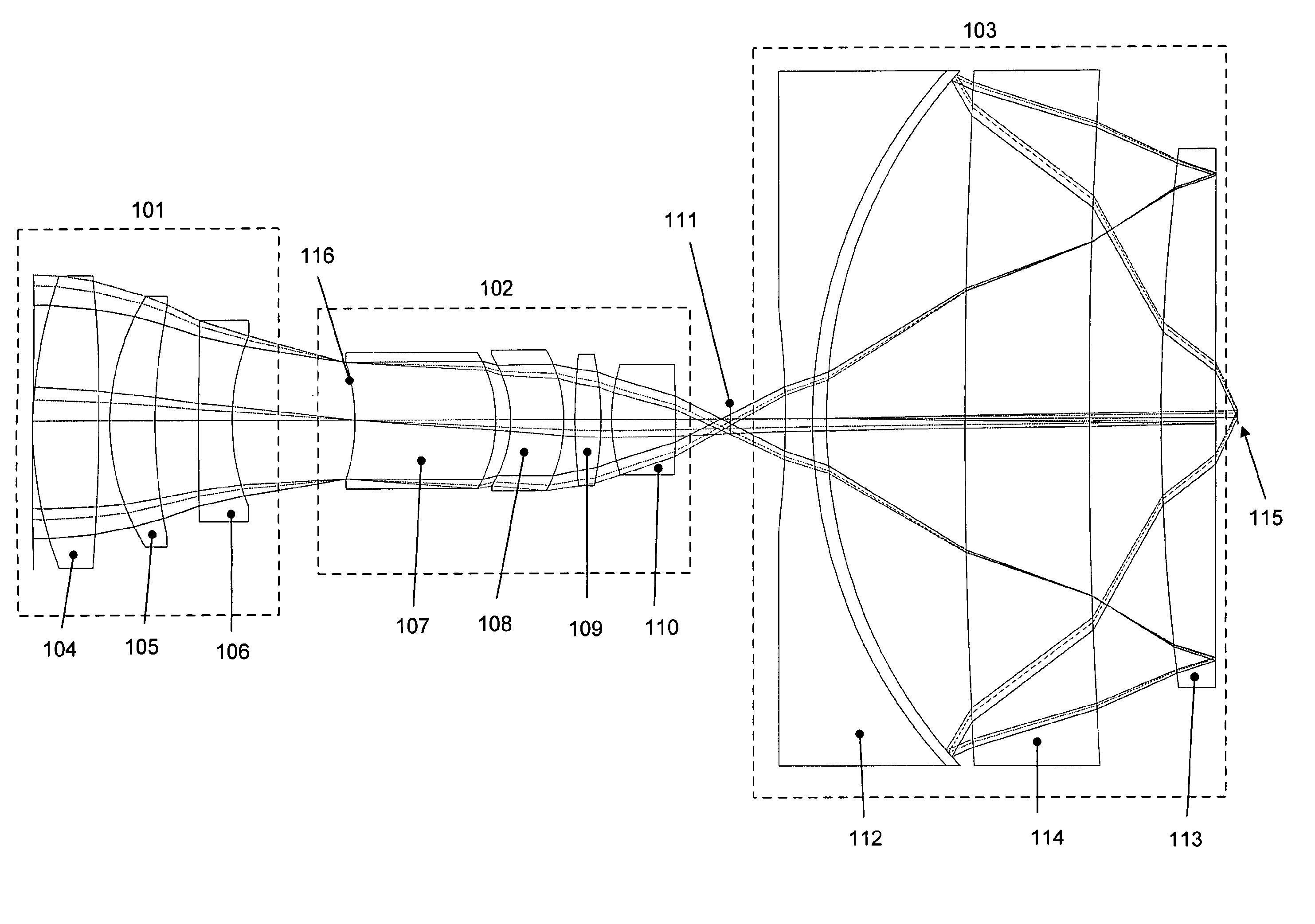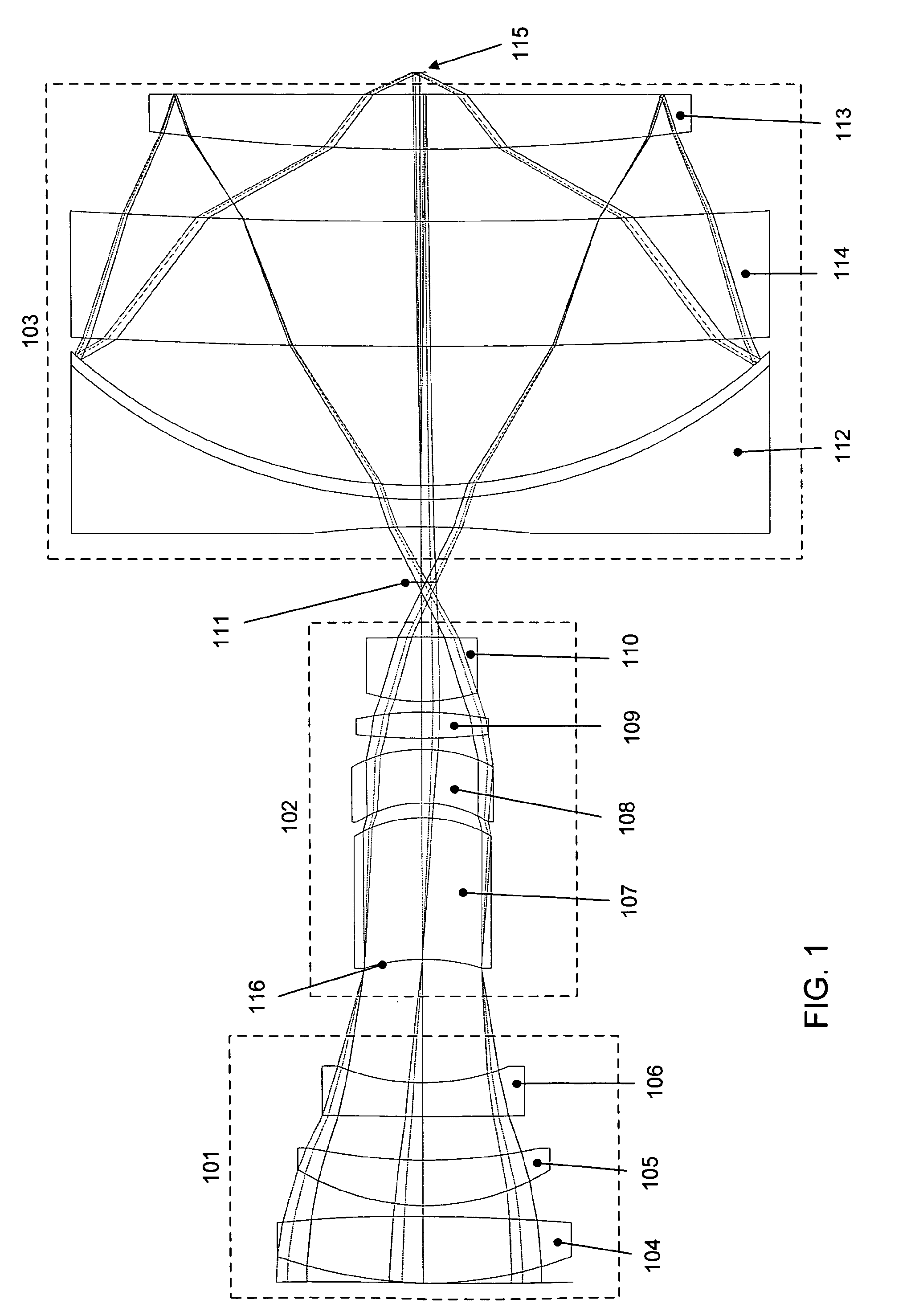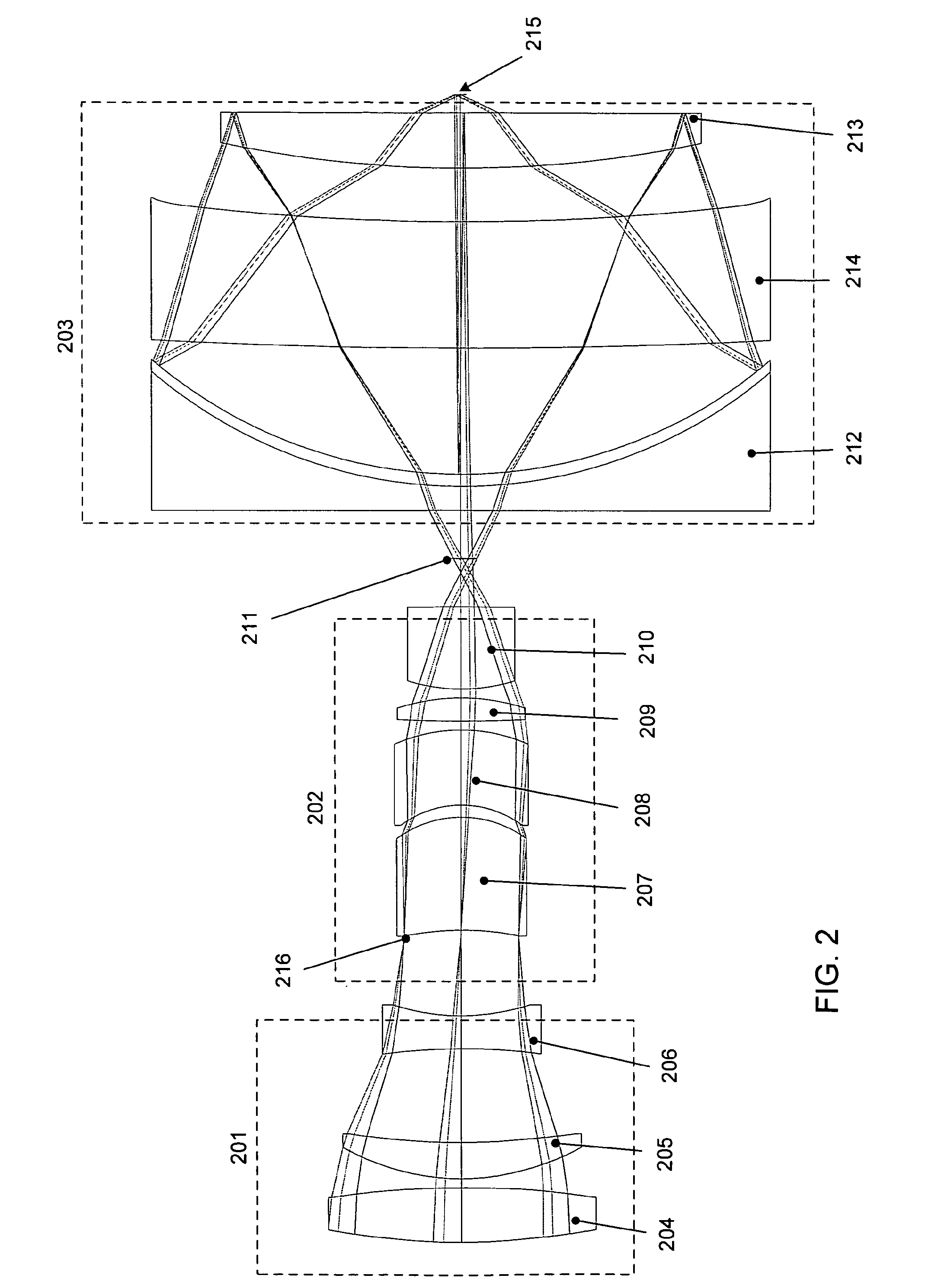External beam delivery system using catadioptric objective with aspheric surfaces
a catadioptric and objective technology, applied in the field of optical imaging, can solve the problems of compromising sensitivity, unable to meet the requirements of advanced specimen inspection, and unable to meet the requirements of advanced specimen inspection, and achieve the effect of facilitating dark-field inspection of specimens
- Summary
- Abstract
- Description
- Claims
- Application Information
AI Technical Summary
Benefits of technology
Problems solved by technology
Method used
Image
Examples
Embodiment Construction
[0024]A catadioptric objective configured to inspect a specimen is provided. The objective includes a plurality of lenses, an element with an aspheric surface shape, and the design supports a bandwidth of at least 0.25 nm. The objective may be successfully employed in oblique laser dark-field mode inspection of specimens, such as semiconductor wafers.
[0025]Oblique laser dark-field inspection relies on detecting light scattered from a defect on a specimen, such as a semiconductor wafer. Inspection systems employing oblique laser dark-field mode can detect defects sized below the resolution of the optical system. Flat areas on the specimen that scatter minimal light toward the detector produce a dark image. Any surface anomalies or features protruding above the object tend to scatter light toward the detector, and when inspecting objects such as semiconductor wafers, dark-field imaging yields bright areas representing features, particles, or other irregularities on a dark background.
[...
PUM
 Login to View More
Login to View More Abstract
Description
Claims
Application Information
 Login to View More
Login to View More - R&D
- Intellectual Property
- Life Sciences
- Materials
- Tech Scout
- Unparalleled Data Quality
- Higher Quality Content
- 60% Fewer Hallucinations
Browse by: Latest US Patents, China's latest patents, Technical Efficacy Thesaurus, Application Domain, Technology Topic, Popular Technical Reports.
© 2025 PatSnap. All rights reserved.Legal|Privacy policy|Modern Slavery Act Transparency Statement|Sitemap|About US| Contact US: help@patsnap.com



